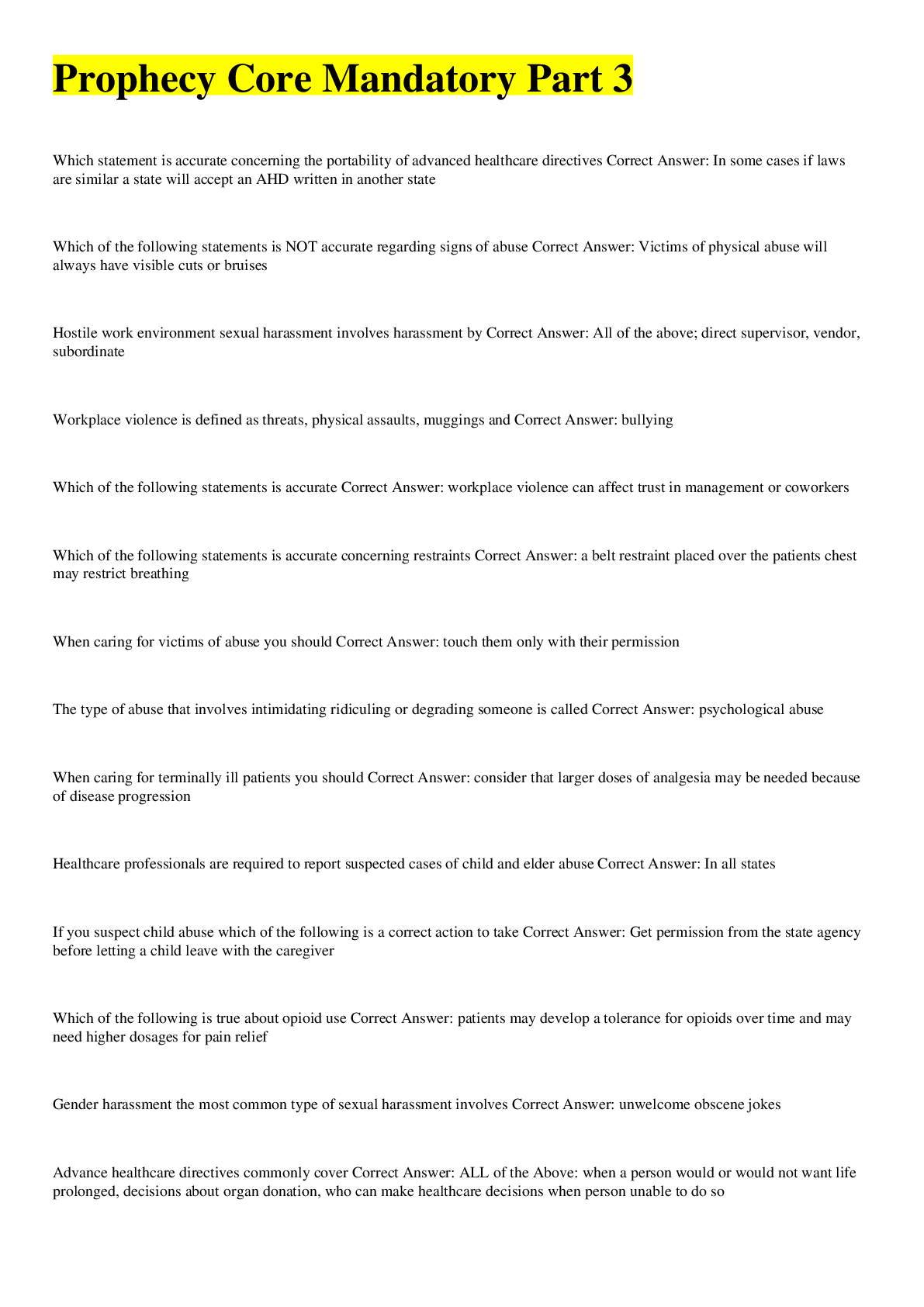CTS CIS 4617 Evolve nivel III Questions and Answers
Document Content and Description Below
Health Promotion and Maintenance 1.A client who is suspected of having tetanus asks a nurse about immunizations against tetanus. Before responding, what should the nurse consider about the benefits ... of tetanus antitoxin? It stimulates plasma cells directly. A high titer of antibodies is generated. It provides immediate active immunity. A long-lasting passive immunity is produced. Tetanus antitoxin provides antibodies, which confer immediate passive immunity. Antitoxin does not stimulate production of antibodies. It provides passive, not active, immunity. Passive immunity, by definition, is not long-lasting. 2.A nurse is determining whether a 5-year-old child is displaying appropriate behaviors for this age. What developmental findings does the nurse expect? Select all that apply. Enjoys imitative play Engages in ritualistic games Makes up rules for a new game Asks for a pacifier when uncomfortable Plays near others quietly but not with them Imitating adults by playing adult roles in society is at its peak in children 5 years of age; activities are strongly identified with same-sex parent. A 5-year-old is able to negotiate and use make-believe to play. These children are able to follow some rules but may cheat to win. Older children in the middle childhood years need conformity and rituals, whether they play games or amass collections. Rules to games are fixed, unvarying, and rigid. Knowing the rules means belonging. The use of a pacifier for oral satisfaction is typical of infants. Parallel play occurs in children ages 2 to 3 years. 3.What is the most appropriate communication strategy for the nurse working with adolescents in a clinic in a large city health center? Relating on a peer level Using typical teenage language Establishing a relationship over time Having discussions in concrete terms Several meetings with an adolescent provide an opportunity to develop trust and establish a relationship. Relating on a peer level is unrealistic because the nurse is not an adolescent’s peer. Using teenage language is not necessary and may even impede the establishment of a relationship. It is not necessary to use concrete terms, because the adolescent is capable of abstract thought. CTS CIS 4617 Evolve nivel III Questions and Answers 4.The nurse is examining different statements that represent the stages of psychosexual development, according to Sigmund Freud’s psychoanalytical model of personality development. Which statement indicates that the individual is aged between 6 to 12 years? The individual focuses on educational and social accomplishments. The individual tries to resolve prior sexual conflicts that have resurfaced. The individual realizes that the parent is something separate from the self. The individual fantasizes about the parent of the opposite sex as the first love interest. According to Sigmund Freud’s psychoanalytical model of personality development, an individual reaches the latency stage between 6 to 12 years of age. At this stage, the sexual urges of the oedipal stage are repressed and the individual channels them into socially acceptable productive activities. Therefore, the child focuses on educational and social accomplishments. When an individual reaches the genital stage, prior sexual conflicts resurface. He or she tries to resolve them in order to be able to begin an adult mature relationship. At the oral stage, which begins from birth and continues till 12 to 18 months, the infant is able to realize that the parent is something separate from the self. An individual between 3 to 6 years old is in the phallic or oedipal stage. At this stage, the child fantasizes about the parent of the opposite sex as the first love interest. Which of these features would the nurse state are exhibited by a preschooler? Temper tantrums Attempts to control situations Synchronization of moral skills Eagerness for formal education Learn to function independently Preschoolers refine the mastery of their bodies to function independently and eagerly await the beginning of formal education.When parents try to control the behavior of a toddler, it leads to temper tantrums and negative behavior. Toddlers get to know their abilities to control situations and seem pleased with it. School-aged children and adolescents refine and synchronize physical, psychosocial, cognitive, and moral skills to become accepted members of society. What important teaching strategies should the nurse take into consideration to bring a change in the client’s lifestyle? Select all that apply. Use written resources at an appropriate reading level. Practice active listening, and ask the client how he or she prefers to learn. Refrain from including family member in efforts to bring a change in the client’s lifestyle. Provide timelines for modification of eating and exercise lifestyle habits without consulting with the client. [Show More]
Last updated: 2 years ago
Preview 1 out of 67 pages

Buy this document to get the full access instantly
Instant Download Access after purchase
Buy NowInstant download
We Accept:

Reviews( 0 )
$15.00
Can't find what you want? Try our AI powered Search
Document information
Connected school, study & course
About the document
Uploaded On
Jan 08, 2022
Number of pages
67
Written in
Additional information
This document has been written for:
Uploaded
Jan 08, 2022
Downloads
0
Views
97

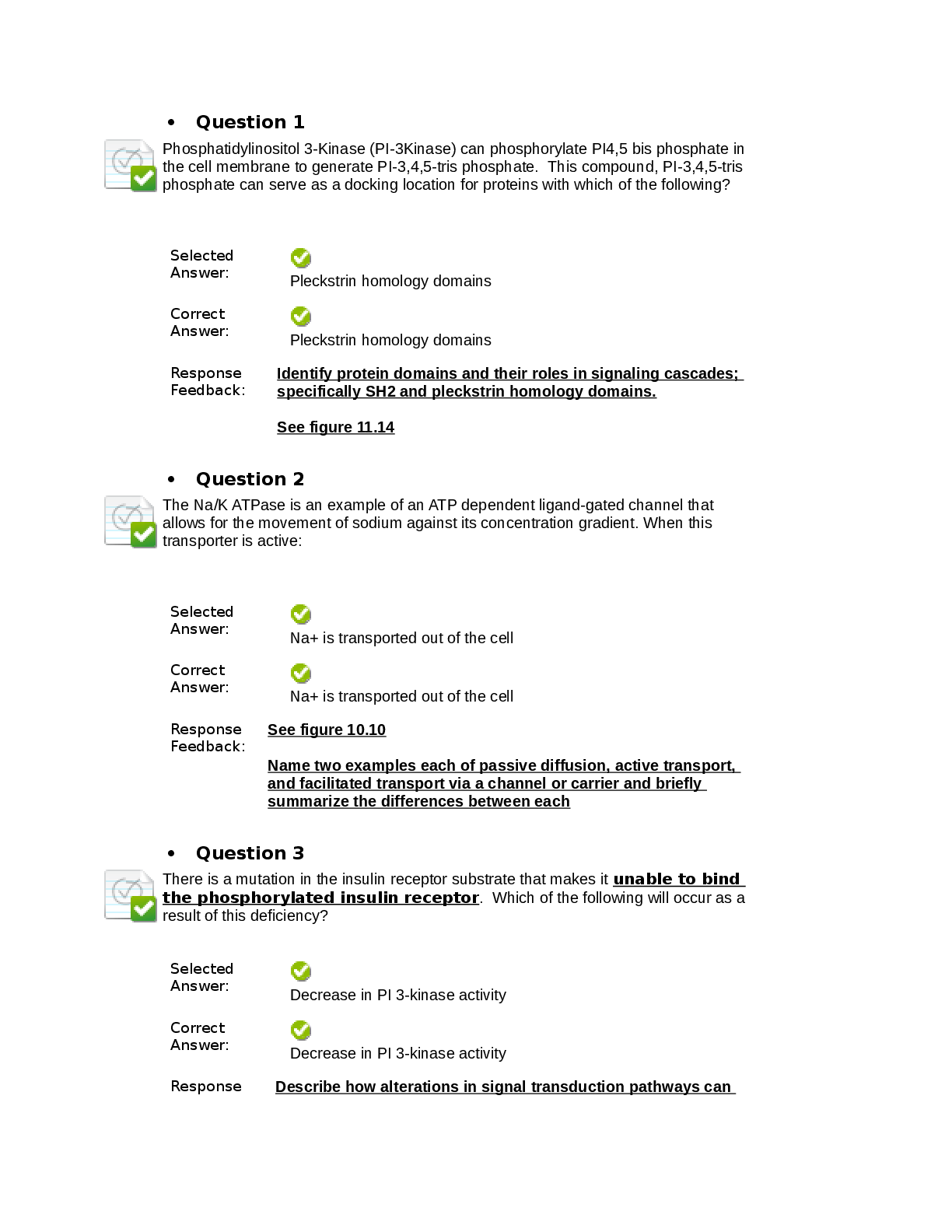
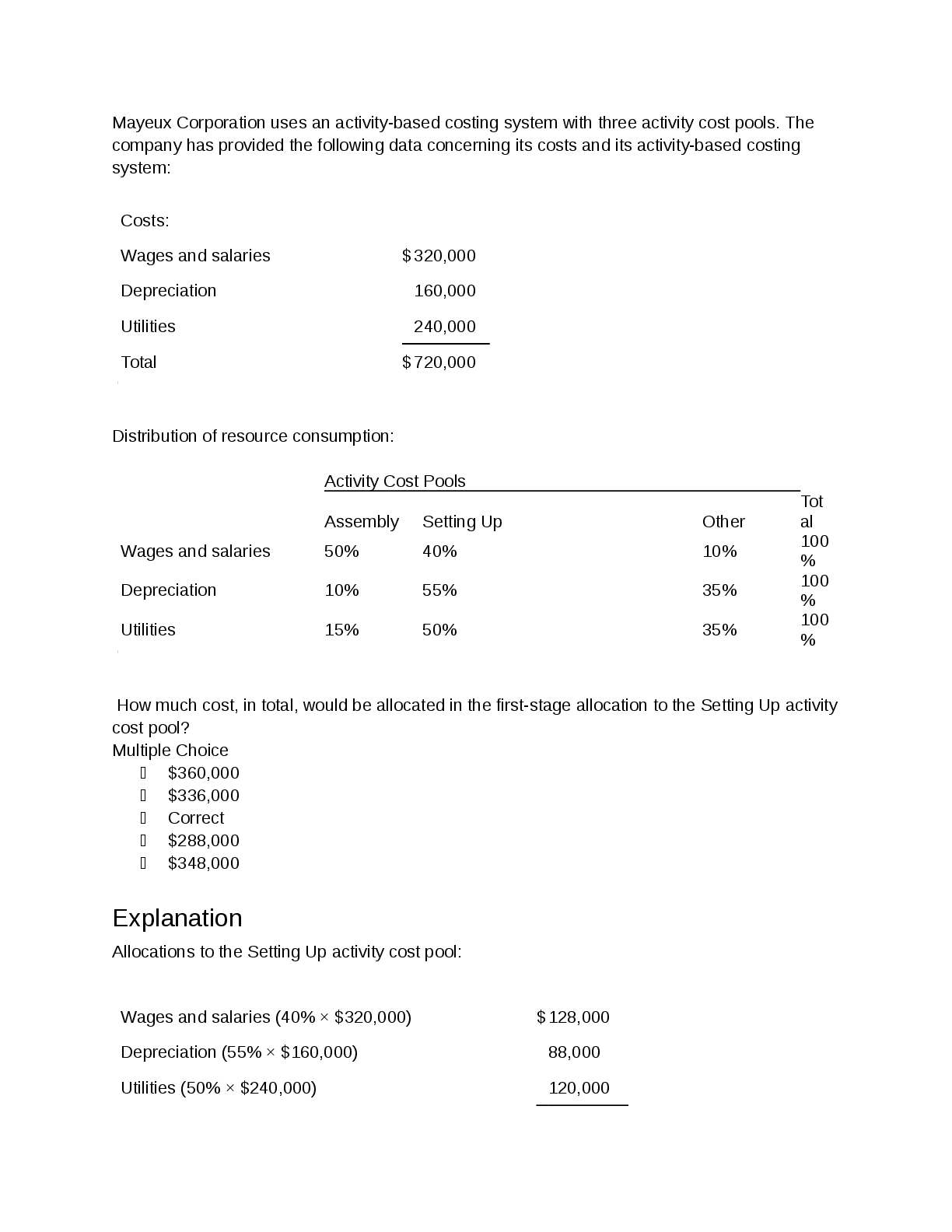
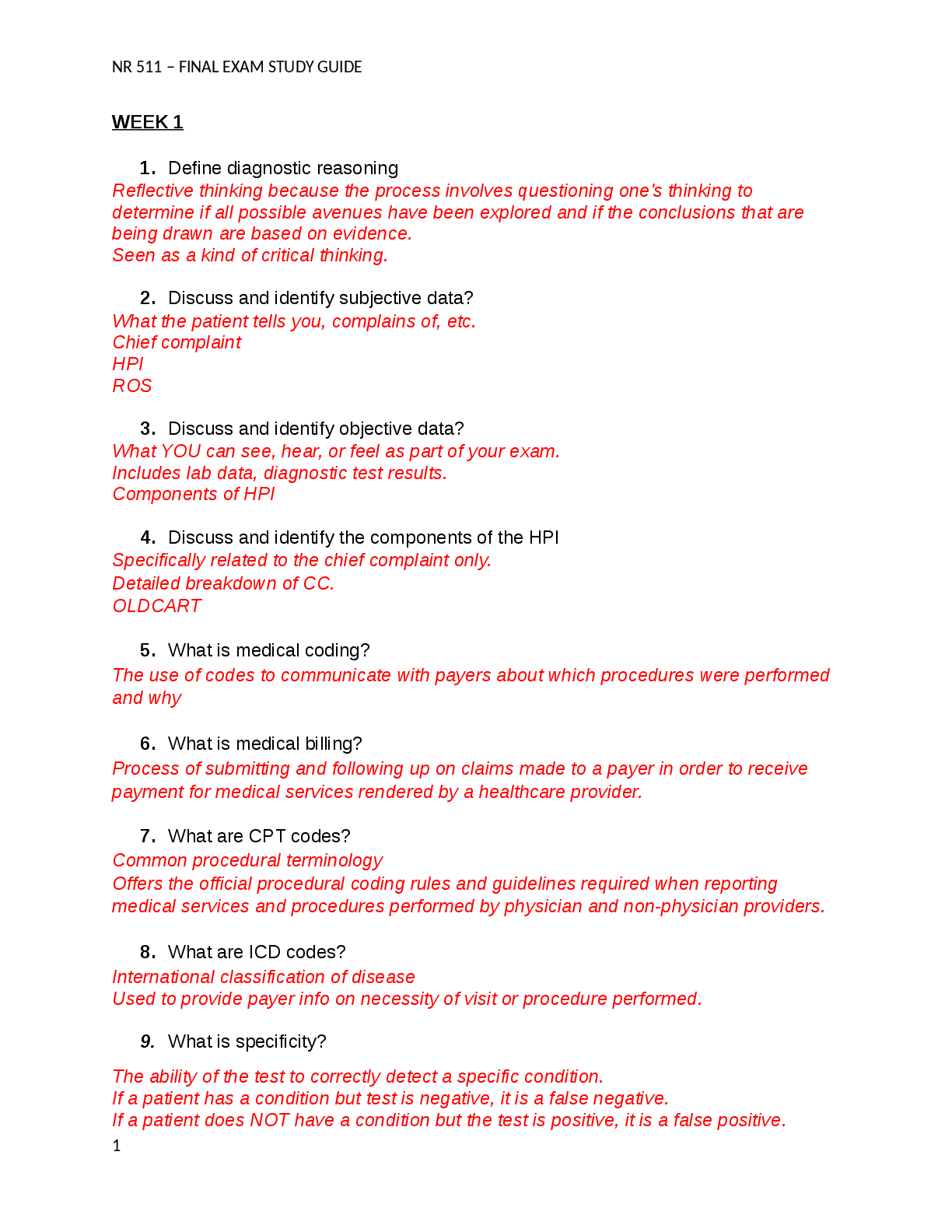
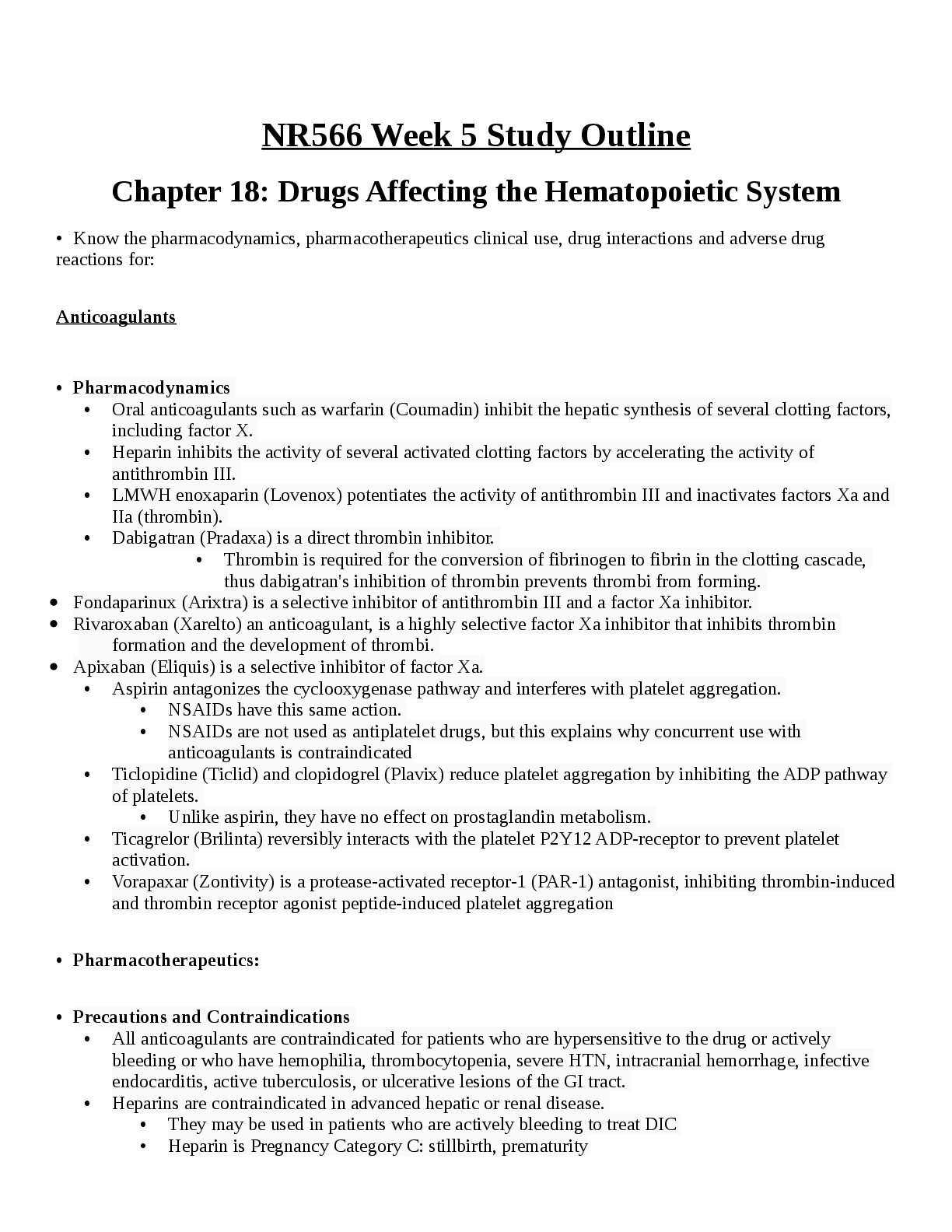

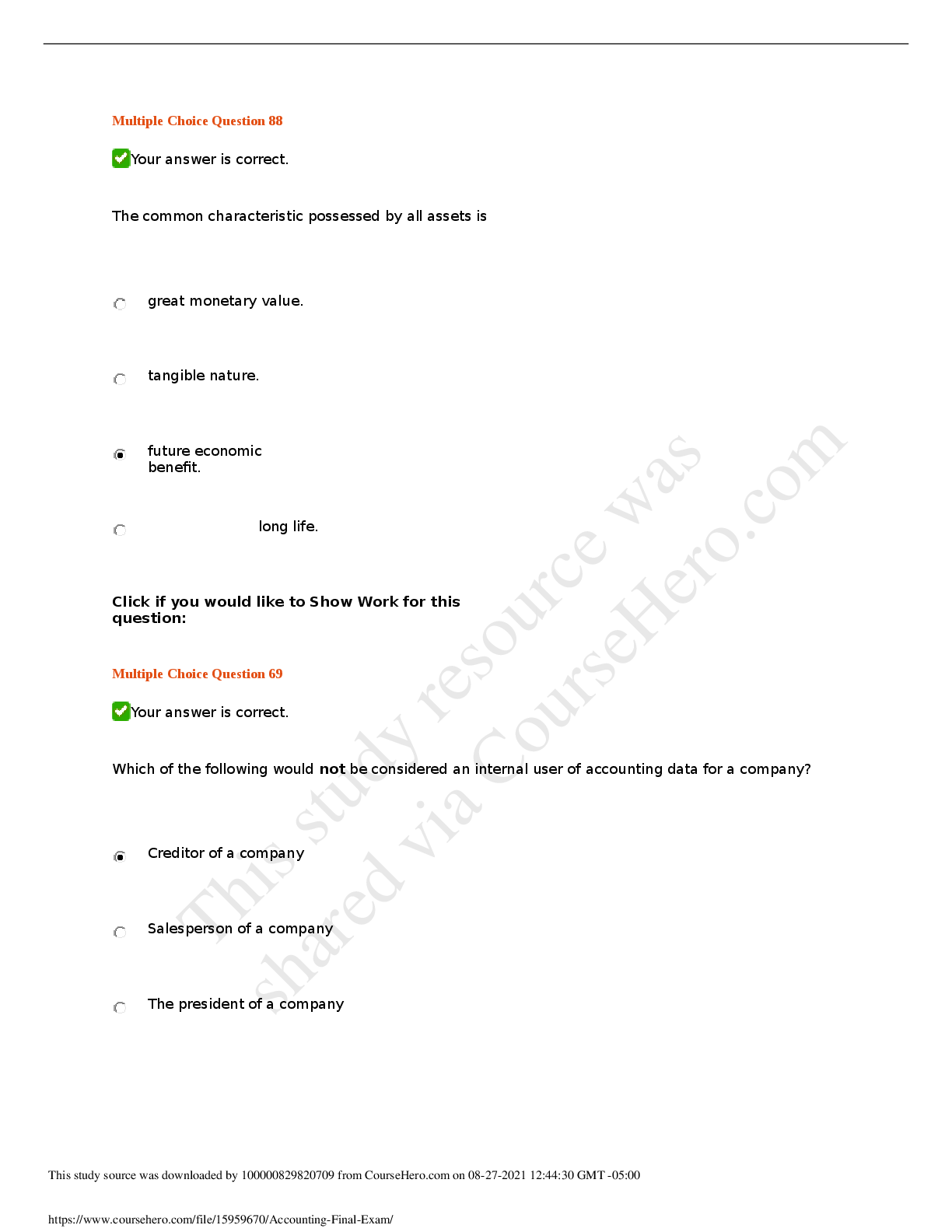
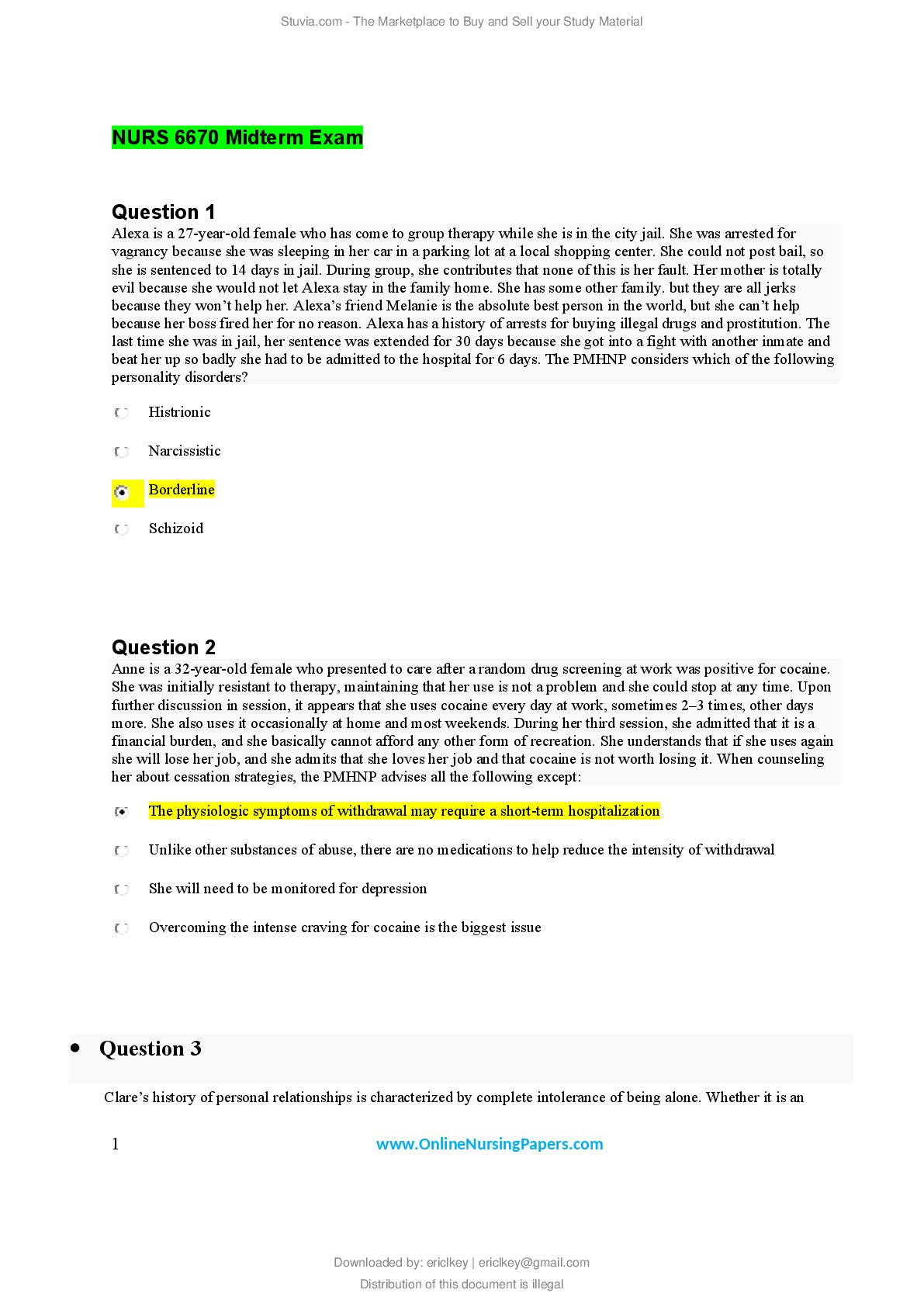
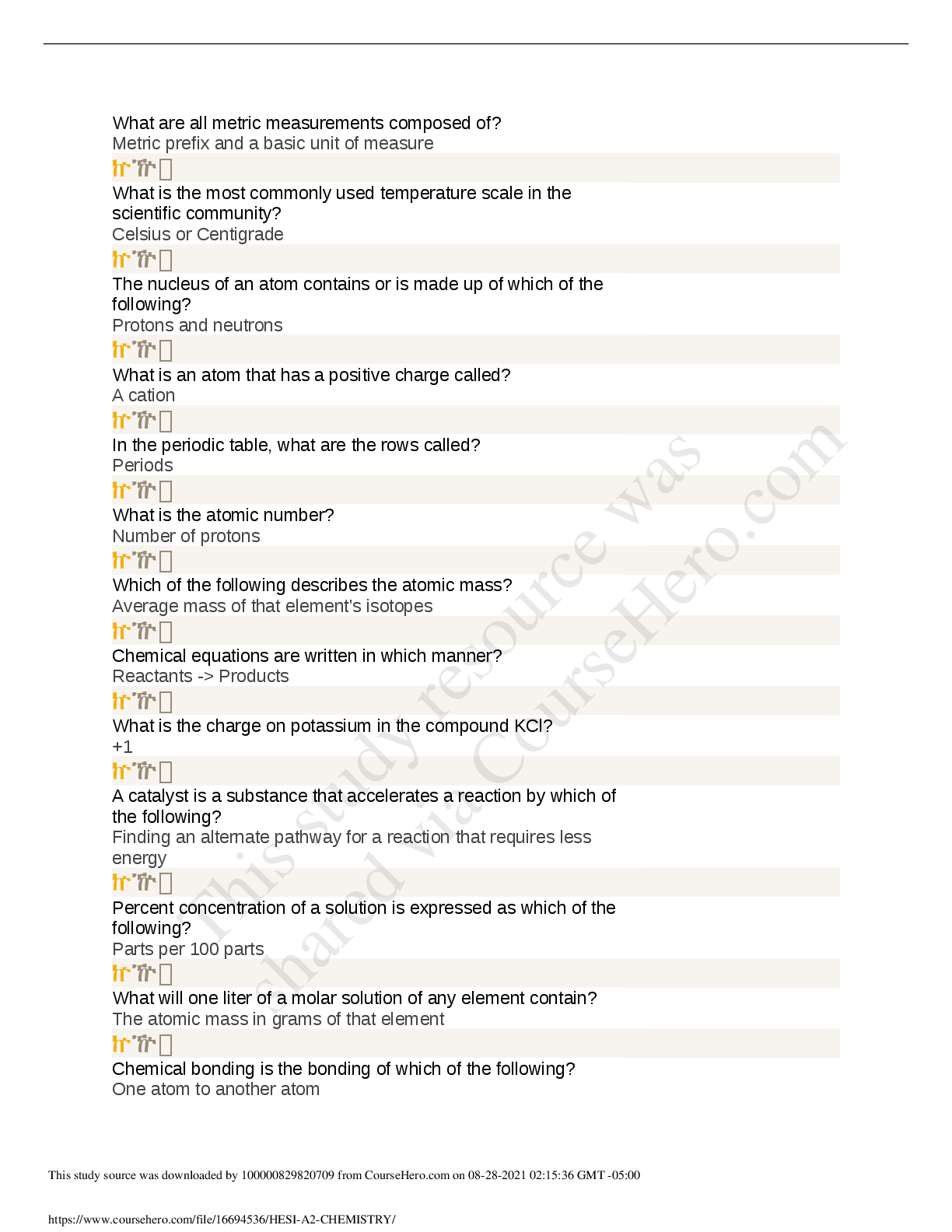
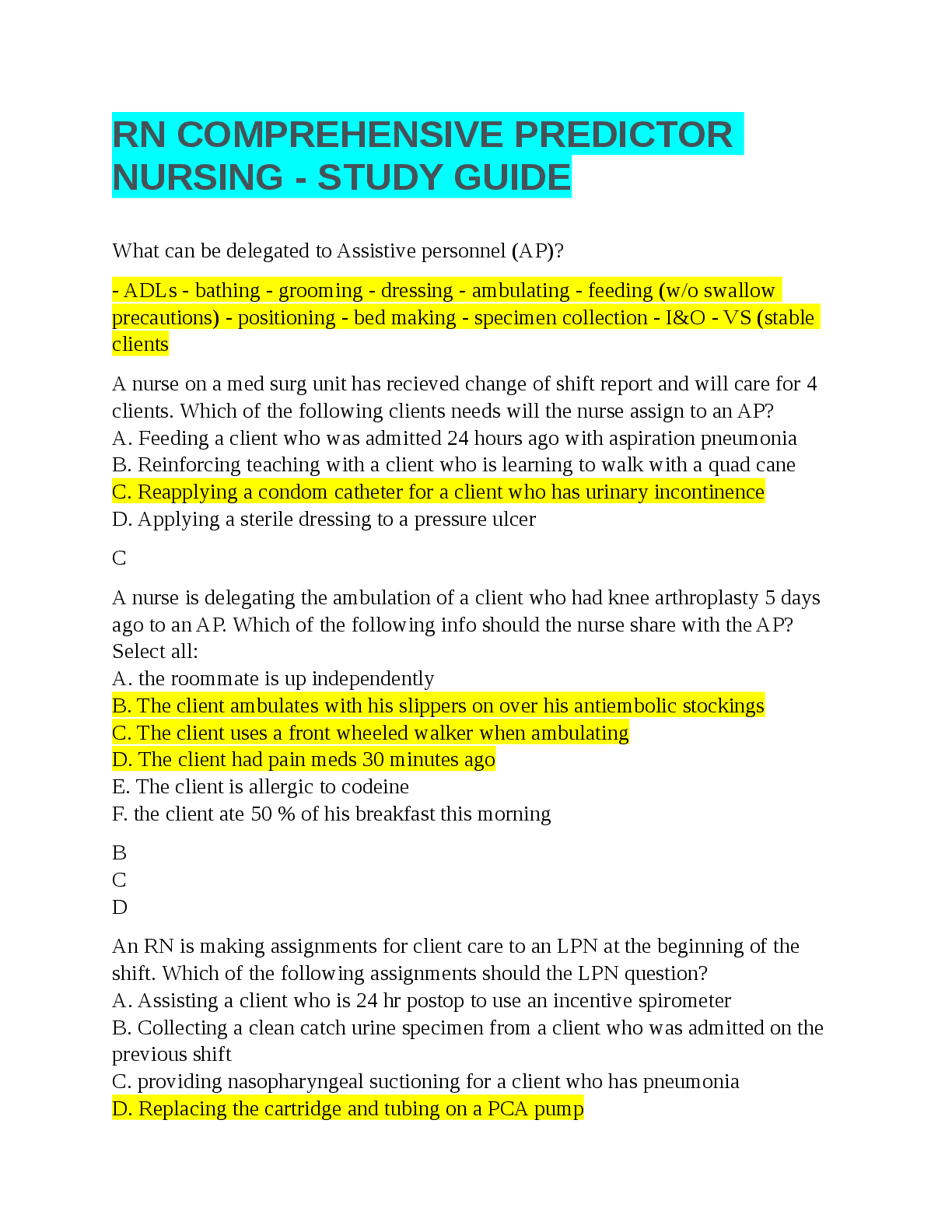

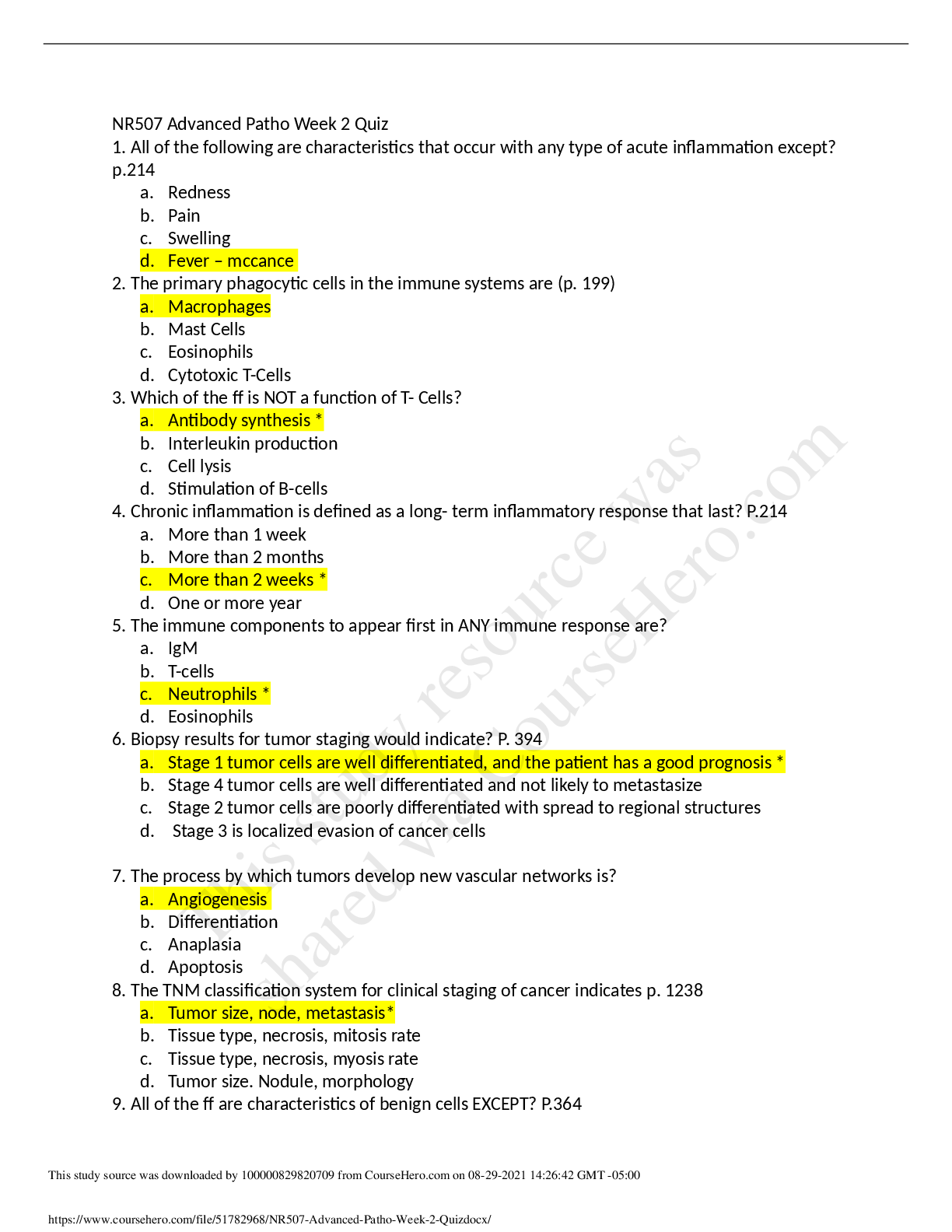

.png)

